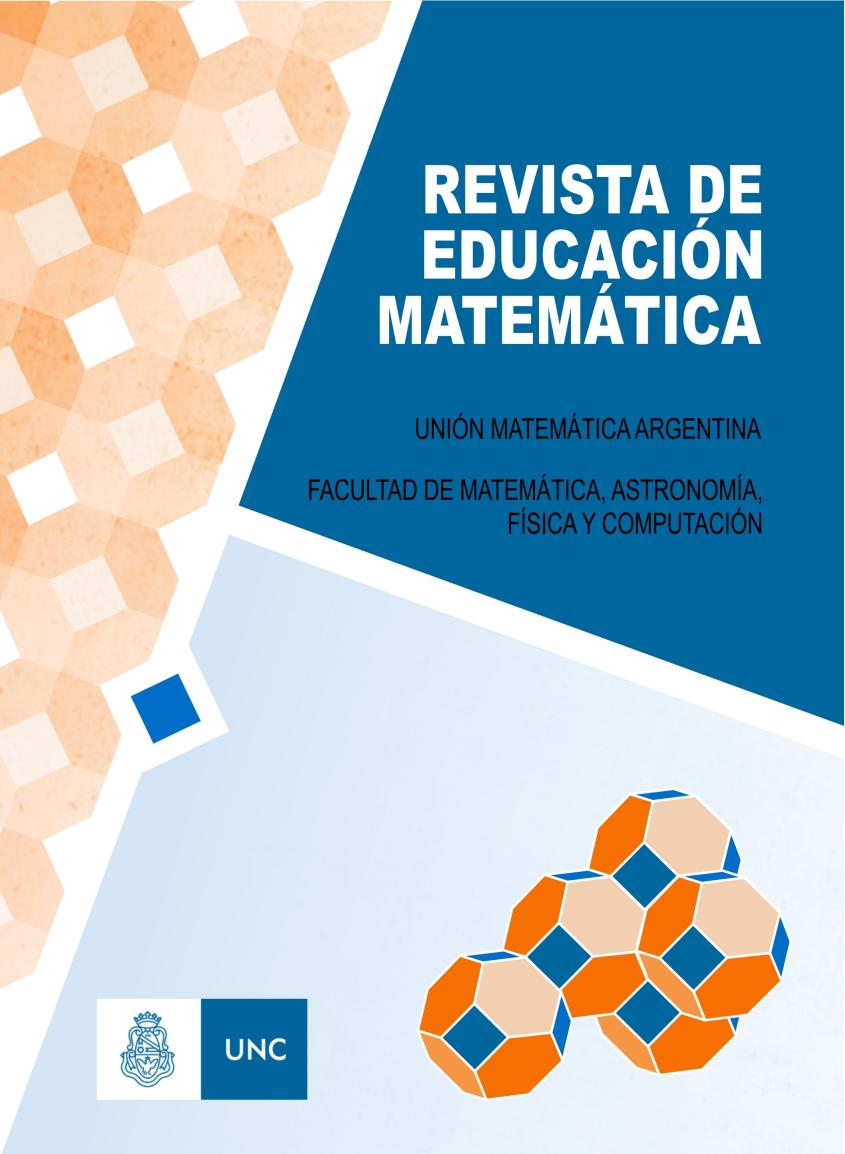The Line: Analysis of Student's Conceptions at the Beginning of Teacher Education
DOI:
https://doi.org/10.33044/revem.47710Keywords:
Number line, Real numbers, Infinity, Teacher educationAbstract
In this article, we present an analysis of the answers to a questionnaire and a set of in-depth interviews developed with students who are completing the first year of university-level mathematics teacher education. The aim is to understand their conceptions
about real numbers, the number line, and the geometric line, as well as the connections they establish between them. We identified that, although most of them agree with the double dimension of the line, ideal and material, this is not so clear when it concerns the points on the line. We analyse the obstacles generated by the infinite decimal representation of numbers when considering their representation on the number line and explore these ideas in relation to the density in R. This inquiry is part of a research project that aims to study a process of conceptualisation of the real line object, in a way that is accessible and at the same time powerful for mathematics teachers’ education, through the design of a teaching sequence. The evidence of these conceptualisations in first year students will allow us, at a later stage, to advance in the design of the proposal
Downloads
References
Artigue, M. (1982). À propos des conceptions du cercle. Présentation de situations de classes privilégiant certaines de ces conceptions (CE2 et CM). Grand N, 27, 45-72.
Artigue, M. (1990). Épistémologie et didactique. Recherches en Didactique des Mathématiques, 2(3), 241-286.
Benito, C., Bergé, A., Cedrón, M., Duarte, B., Herrera, R., Lamela, C., Montes de Oca, M., Morales, G., & Rey, M. (2023). Los números reales en la escuela secundaria. Una secuencia posible. Ciudad de Buenos Aires, UNIPE: Editorial Universitaria.
Bergé, A. (2004). Un estudio de la evolución del pensamiento matemático: el ejemplo de la conceptualización del conjunto de los números reales y de la noción de completitud en la enseñanza universitaria [Tesis doctoral, Facultad de Ciencias Exactas y Naturales, Universidad de Buenos Aires].
Castela, C. (1997). La droite des réels en seconde: point d’appui disponible ou enjeux clandestin? En Brochure de l’IREM de Rouen. Université de Rouen.
Cedrón, M., Duarte, B., Herrera, R., & Lamela, C. (2021). Representación y densidad en los reales. Análisis de experiencias de aula. Revista Científica EFI-DGES, 7(12), 109-122.
Durand-Guerrier, V. (2018). La triade discret, dense, continu dans la construction des nombres. En Actes de la CORFEM. Nîmes, 13–14 Juin.
Garbin, S. (2005). ¿Cómo piensan los alumnos entre 16 y 20 años el infinito? La influencia de los modelos, las representaciones y los lenguajes matemáticos. Revista Latinoamericana de Investigación en Matemática Educativa, 8(2), 169-193.
Kidron, I., & Tall, D. (2015). The roles of visualization and symbolism in the potential and actual infinity of the limit process. Educational Studies in Mathematics, 88, 183-199.
Montoro, V., Cifuentes, M., Salva, N., & Bianchi, M. (2017). Students’ understanding of the number line / Estudiantes pensando en la recta numérica. Infancia y Aprendizaje, Journal for the Study of Education and Development. https://doi.org/10.1080/02103702.2017.1304879
Montoro, V., & Ferrero, M. (2022). Diversidad de ideas construidas por estudiantes sobre los números reales, los números irracionales, el orden y la densidad. Revista de Educación Matemática, 37(1), 61-92.
Montoro, V., & Scheuer, N. (2004). ¿Cómo piensan el infinito matemático los estudiantes universitarios de distintas carreras? Revista Epsilon, 60, 20(3), 435-447.
Peled, I., & Hershkovitz, S. (1999). Difficulties in knowledge integration: Revisiting Zeno’s paradox with irrational numbers. International Journal of Mathematical Education in Science and Technology, 30(1), 39-46.
Robinet, J. (1986). Les Réels: Quels modèles en ont les élèves? Educational Studies in Mathematics, 17, 359-386.
Romero, C. (1996). Una investigación sobre los esquemas conceptuales del continuo. Ensayo de un cuestionario. Enseñanza de las Ciencias, 14, 3-14.
Scaglia, S. (2000). Dos conflictos al representar números reales en la recta numérica [Tesis doctoral, Universidad de Granada].
Sierspinska, A. (1987). Humanities students and epistemological obstacles related to limits. Educational Studies in Mathematics, 18, 371-397.
Sirotic, N., & Zazkis, R. (2007). Irrational numbers on the number line - where are they? International Journal of Mathematical Education in Science and Technology, 38(4), 477-488.
Vergnac, M. (2013). Les nombres réels au lycée et à l’entrée à l’université. Premier état des lieux et perspectives [Tesis de maestría, 2 recherche, Université Montpellier II Mention “Histoire, Philosophie et Didactique des Sciences”].
Zazkis, R., & Sirotic, N. (2004). Making sense of irrational numbers: Focusing on representation. En A. Hoines & A. Fuglestad (Eds.), Proceedings of 28th International Conference for Psychology of Mathematics Education (pp. 497-505, Vol. 4). Bergen, Norway.
Downloads
Published
Issue
Section
License

This work is licensed under a Creative Commons Attribution-ShareAlike 4.0 International License.
Aquellos autores/as que tengan publicaciones con esta revista, aceptan los términos siguientes:
- Los autores/as conservarán sus derechos de autor y garantizarán a la revista el derecho de primera publicación de su obra, el cuál estará simultáneamente sujeto a la Atribución-CompartirIgual 4.0 Internacional (CC BY-SA 4.0), que permite:
- Compartir — copiar y redistribuir el material en cualquier medio o formato
- Adaptar — remezclar, transformar y construir a partir del material
- La licenciante no puede revocar estas libertades en tanto usted siga los términos de la licencia
- Los autores/as podrán adoptar otros acuerdos de licencia no exclusiva de distribución de la versión de la obra publicada (p. ej.: depositarla en un archivo telemático institucional o publicarla en un volumen monográfico) siempre que se indique la publicación inicial en esta revista.
- Se permite y recomienda a los autores/as difundir su obra a través de Internet (p. ej.: en archivos telemáticos institucionales o en su página web) después del proceso de publicación, lo cual puede producir intercambios interesantes y aumentar las citas de la obra publicada. (Véase El efecto del acceso abierto).









